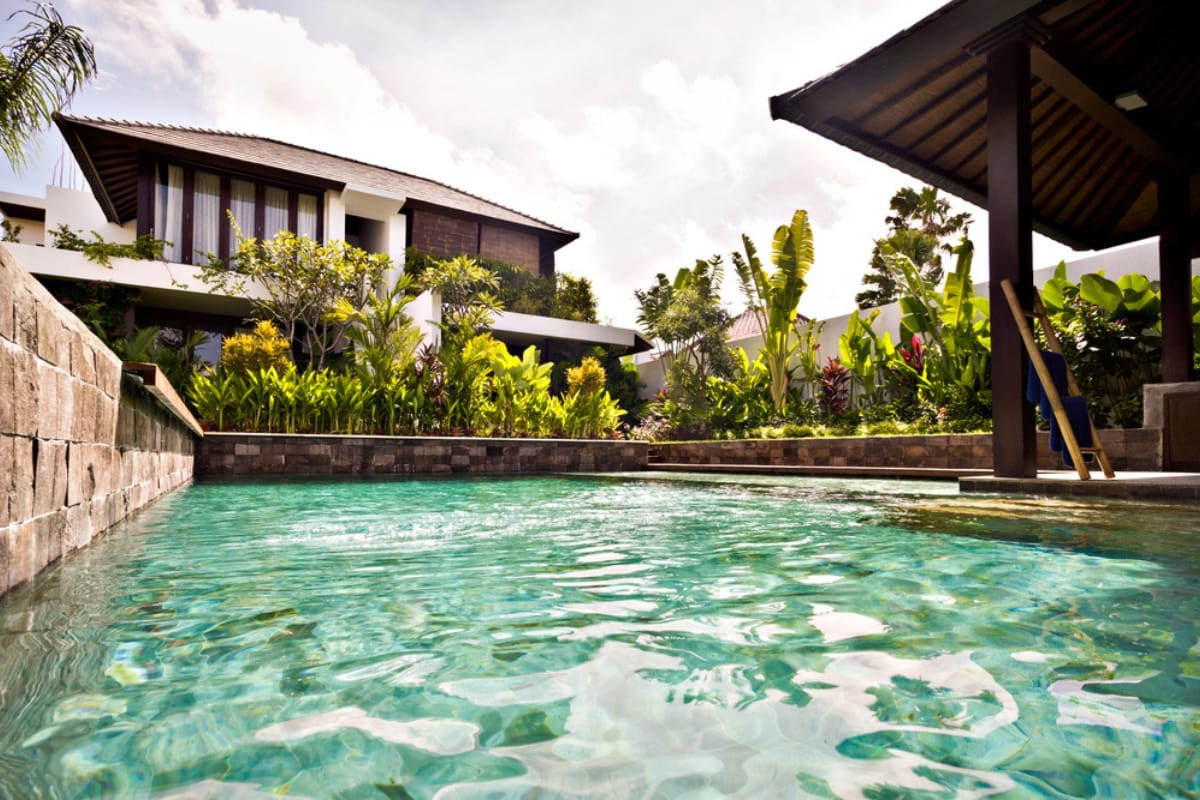A well-maintained pool is a centerpiece of backyard relaxation, especially in Cherokee County where warm weather makes outdoor living a priority. Over time, however, even the best pools can show signs of wear that affect both their appearance and functionality. Cracks, discoloration, rough surfaces, and frequent leaks may all signal that it’s time for pool resurfacing. Ignoring these warning signs can lead to more costly repairs down the line. In this guide, we’ll highlight the key signs your pool may need resurfacing and why timely attention is crucial. Whether you’re a longtime pool owner or new to pool maintenance, knowing what to watch for can help keep your oasis in top shape.
Before Summer Hits: Pool Resurfacing Signs Every Cherokee County Homeowner Should Know
Understanding the Importance of Pool Resurfacing
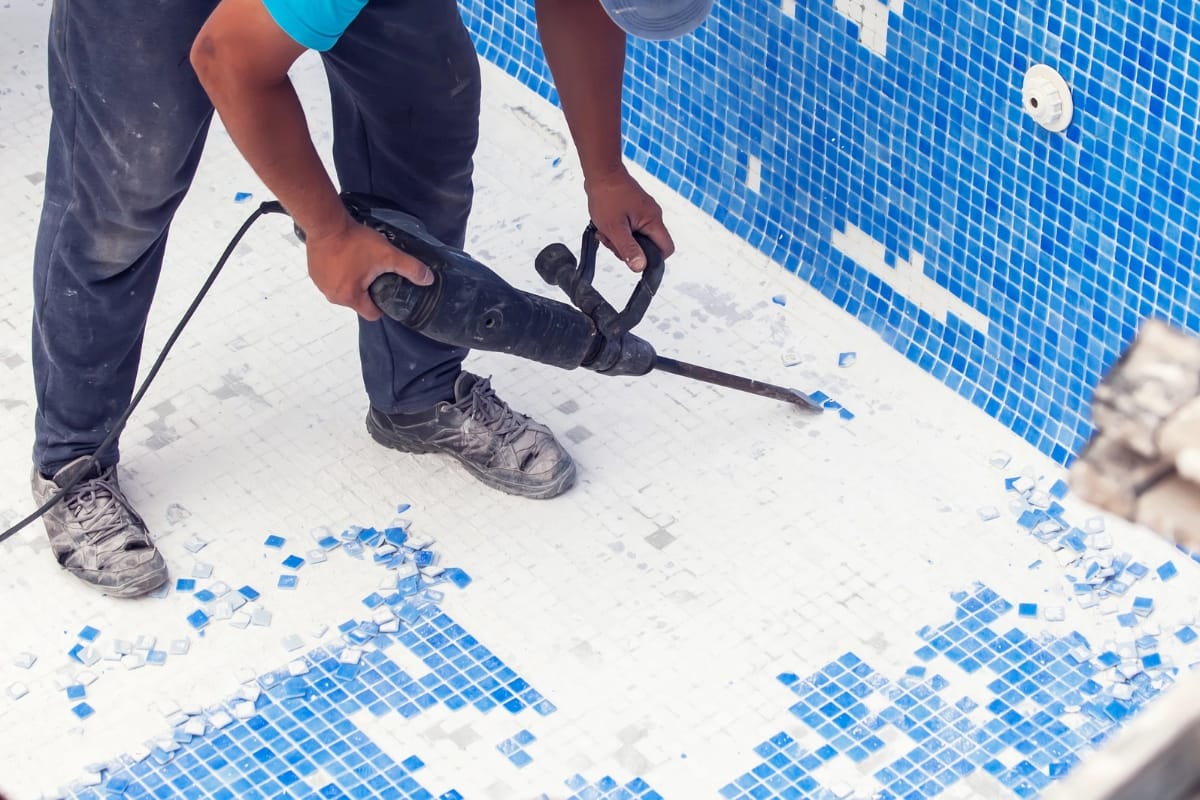
Pool resurfacing isn’t just about improving how your pool looks—it’s an important part of routine maintenance that helps keep your pool safe, functional, and enjoyable to use. Over time, the surface of a pool breaks down due to constant exposure to water, chemicals, weather, and regular use. Cracks, stains, rough patches, or fading can all be signs that it’s time for a refresh.
If left untreated, worn surfaces can lead to more serious issues like leaks, structural problems, or sharp edges that create safety hazards. Resurfacing helps address these problems before they get worse, saving you from more costly repairs down the line.
It also plays a role in keeping your pool water clean. An older, rough surface can trap algae, bacteria, and mineral deposits, which makes water harder to balance and increases chemical usage. A freshly resurfaced pool is smoother and less porous, helping to prevent buildup and making maintenance easier.
In Cherokee County, where pools are often used for much of the year, resurfacing is a smart way to protect your investment. Choosing quality materials during the process means better durability and fewer problems in the future. Whether you’re dealing with visible wear or just planning ahead, resurfacing is one of the best ways to extend the life of your pool and ensure a clean, safe swim for everyone.
Recognizing Physical Signs of Pool Surface Damage
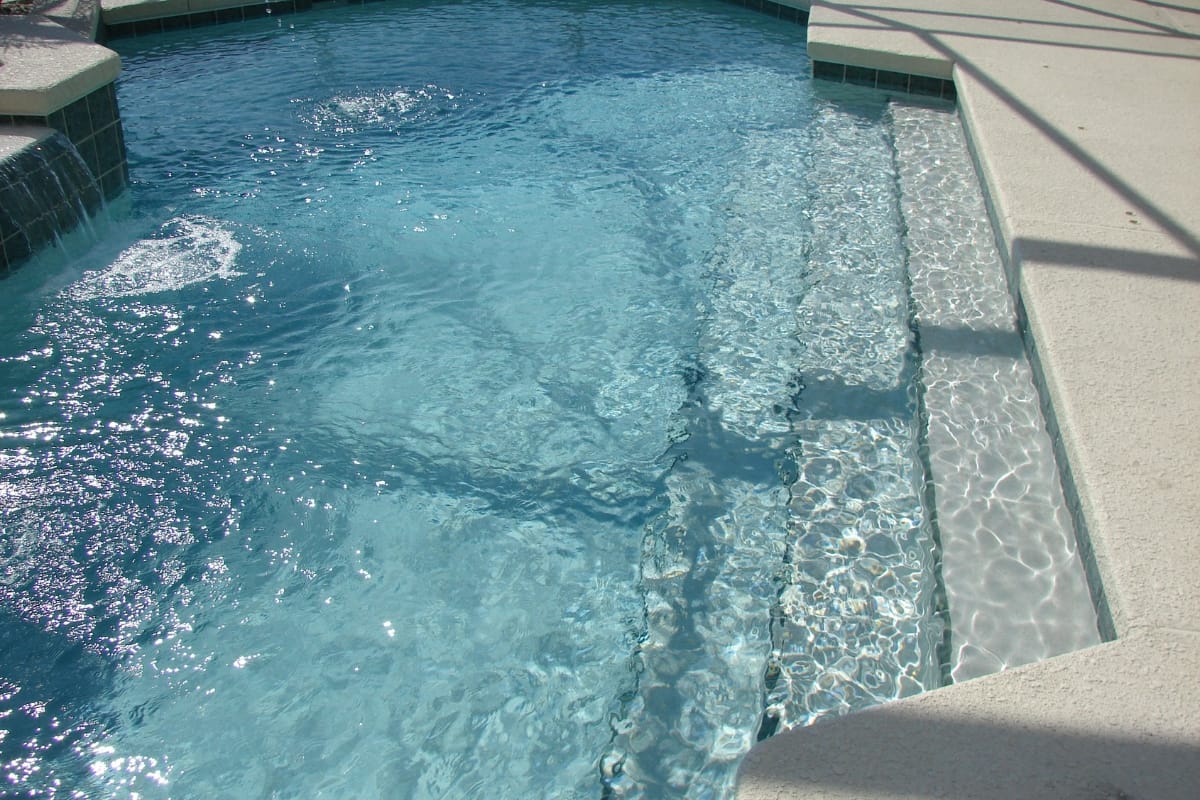
Keeping an eye on your pool’s surface can help you catch problems early and avoid more expensive repairs. Surface damage usually starts small, but if you ignore it, it can quickly turn into a bigger issue.
One of the first signs to look for is rough or sharp areas underfoot. These spots often mean the finish is wearing away and the underlying concrete or base layer is starting to show. If left untreated, these areas can become uncomfortable—or even dangerous—for swimmers.
Cracks are another common warning sign. Fine lines around steps, benches, or walls may not seem serious at first, but they can expand over time. Flaking, chipping, or visible pitting are also strong indicators that resurfacing is needed. Discoloration, especially white or chalky marks, may point to calcium buildup or scale. Not only do these affect how your pool looks, but they’re also a sign that the surface is breaking down and losing its protective qualities.
If you notice your pool is losing water faster than usual and you’ve ruled out evaporation, surface porosity could be to blame. When a worn finish allows water to seep through, it can lead to deeper damage and higher water bills.
Spotting these issues early and addressing them with timely pool resurfacing can prevent long-term problems and help you maintain a safe, functional pool.
Identifying Chemical Indicators of Pool Deterioration

Surface damage in a pool isn’t always visible right away—sometimes the first signs show up in the water chemistry. If you’re constantly adjusting your pool’s pH and it still fluctuates more than normal, it could mean the surface is breaking down and interfering with the water’s balance. A deteriorating surface allows contaminants to build up more easily, which can throw off your readings and make chemical maintenance harder.
Another red flag is scale buildup. If you’re seeing white, chalky patches—usually calcium deposits—it often means minerals are coming out of the water and sticking to the pool walls. These rough spots don’t just look bad—they can also trap bacteria and make your pool harder to clean. Staining is another issue to watch for. Orange or brown marks may be signs of metal corrosion, but they also suggest the pool surface is becoming porous enough to absorb those particles.
If you’re constantly dealing with cloudy water, algae blooms, or sanitizer that doesn’t seem to hold, your surface might be contributing to the problem. A compromised finish can absorb chemicals and reduce their effectiveness, forcing you to use more to keep things stable.
When chemical problems persist despite regular care, it’s often a sign that the pool needs resurfacing. Bringing the surface back to good condition helps stabilize the water, reduce chemical use, and make regular maintenance easier and more effective.
The Impact of Weather and Climate on Pool Surfaces
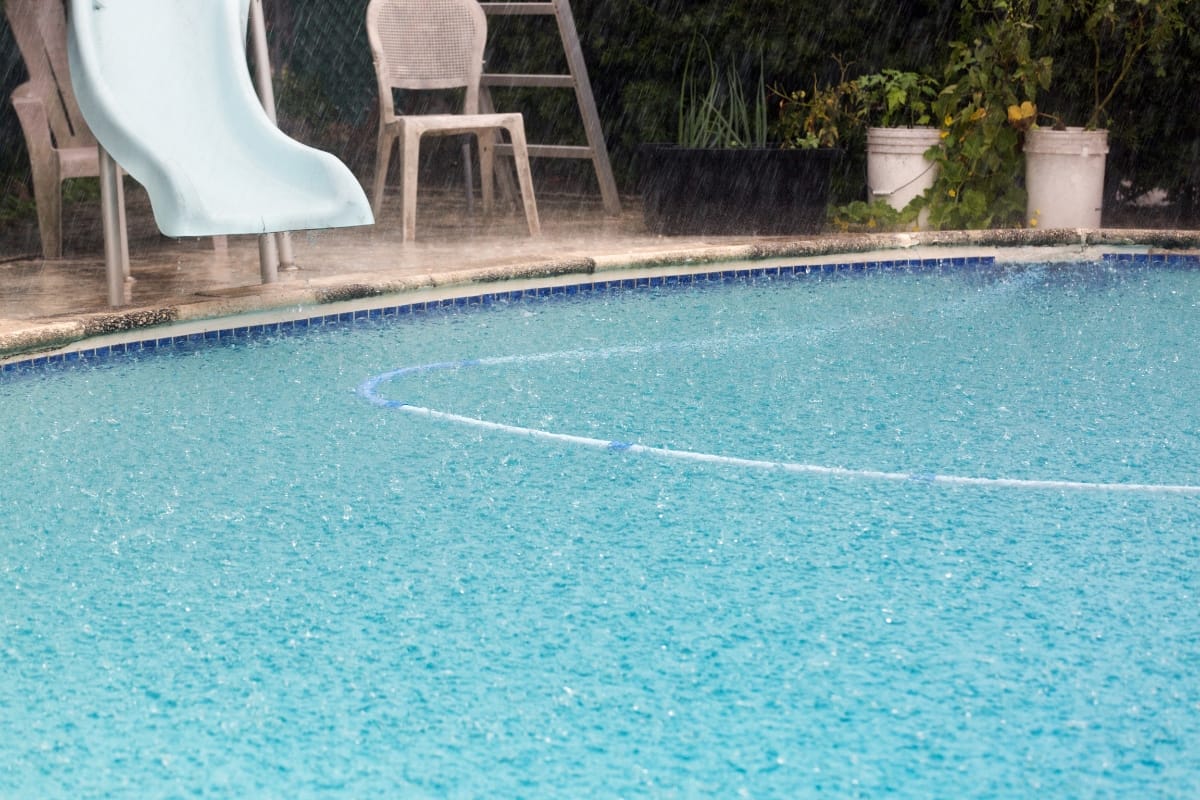
Cherokee County’s changing seasons can have a direct impact on the condition of your pool’s surface. Intense summer heat and strong UV exposure can cause plaster or painted finishes to fade and weaken over time. As the surface dries out under the sun, it can become brittle and prone to cracking or flaking.
Winter brings its own challenges. When temperatures drop, water that seeps into small cracks can freeze and expand. This freeze-thaw cycle widens surface damage and, over time, can affect the structural integrity of the pool. Even if you don’t see major cracks right away, the stress from repeated expansion and contraction can quietly do damage beneath the surface.
Heavy rain and storms also play a role. Rainwater can carry debris and contaminants into the pool, and runoff may introduce acidic elements that gradually wear down the finish. Debris left sitting on the surface can also lead to stains or scratches if not removed quickly.
Understanding how Cherokee County’s climate affects your pool helps you plan ahead. Instead of waiting until there’s visible damage, scheduling resurfacing before peak weather seasons—especially ahead of summer or after a rough winter—can help extend the life of your pool. Timely maintenance ensures the surface stays smooth, safe, and ready to handle whatever the weather brings.
Exploring the Different Pool Resurfacing Options Available
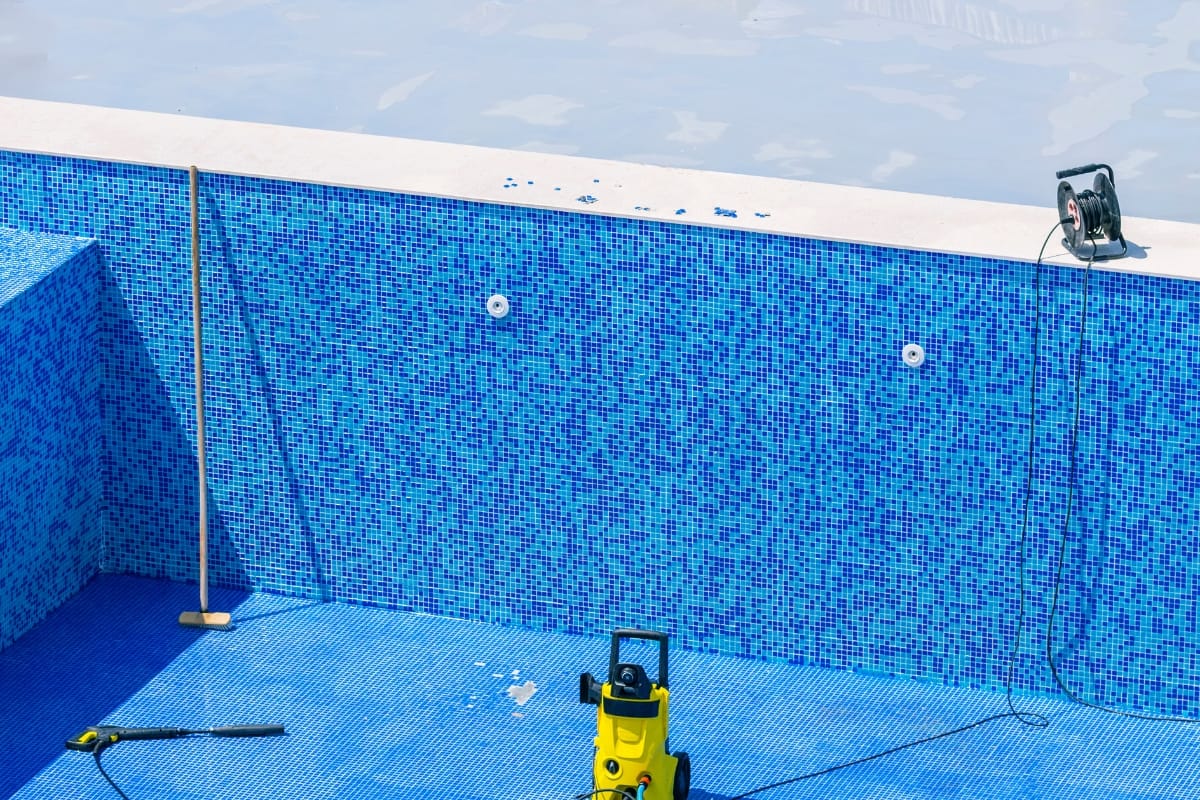
When it’s time to resurface your pool, the right choice comes down to budget, appearance, durability, and how much maintenance you’re willing to take on. Each option has its pros and cons, and it’s important to weigh them based on how you use your pool and the local conditions in Cherokee County.
Plaster is the most common and affordable choice. It has a smooth finish and a clean look, but it typically needs resurfacing every 5 to 10 years. It’s also more prone to staining and surface wear, especially in pools with fluctuating chemical levels or high sun exposure.
Pebble and aggregate finishes offer more durability and texture. These finishes mix small stones into the surface, making them more resistant to stains and chemical damage. They also give the pool a more natural, upscale look. While they cost more than plaster, they can last up to 15–20 years with proper care.
Quartz-based finishes are another step up. By adding crushed quartz to the plaster mix, you get a harder, longer-lasting surface that stands up well to wear and tear. It’s a good middle ground—more durable than basic plaster but not as expensive as high-end tile or pebble options.
Fiberglass coatings are a fast-install solution and are known for being low maintenance. They’re non-porous, which helps resist algae and staining. However, they can show wear over time, and repairs aren’t always easy or seamless. Fiberglass is also better suited to standard pool shapes.
Tile or glass mosaics offer a premium look and excellent longevity. They’re easy to clean and highly resistant to damage, but the cost and labor involved are significantly higher. This option is best for homeowners who want a standout design and don’t mind the upfront investment.
Choosing the right resurfacing material depends on how often you use your pool, the type of wear it sees, and the climate challenges it faces. A local professional can walk you through the options and help you decide what makes the most sense for your space and budget.
Budgeting and Planning for Pool Resurfacing Projects

Planning for a pool resurfacing project starts with knowing what drives the overall cost. The size and shape of your pool will directly affect how much material and labor is needed. The type of finish you choose—whether it’s plaster, aggregate, quartz, or tile—also plays a big role in the final price. Basic plaster is the most affordable, while high-end options like tile or pebble finishes cost more but tend to last longer.
Don’t forget to include prep work in your budget. This can involve draining the pool, cleaning the surface, and repairing any cracks, leaks, or structural damage before the new finish goes on. Skipping this step can lead to issues later, so it’s worth getting right the first time.
Timing matters, too. Scheduling your project during the off-season (late fall or early spring) may help you lock in better rates and avoid long wait times. Just keep in mind that colder or wetter weather may slow the curing process and extend your timeline slightly.
When gathering estimates, get quotes from at least two or three licensed contractors. Ask for a detailed breakdown of labor, materials, and any necessary permits. This will give you a clearer picture of where your money is going—and help you avoid surprise charges. It’s also smart to set aside a contingency budget of 10–15% for unexpected repairs or upgrades that might come up during prep work.
Maintaining Your Newly Resurfaced Pool for Longevity

After resurfacing your pool, proper upkeep is essential to protect your investment and extend the life of the new surface. A good maintenance routine helps keep your water clean, your finish looking sharp, and your equipment working as it should.
Start by brushing the pool walls and floor at least once a week. This helps prevent algae buildup and keeps minerals from settling on the surface. Use the right type of brush for your pool finish—nylon brushes for plaster or quartz, and stainless steel for exposed aggregate surfaces.
Water chemistry should also be checked regularly. Test your pH, alkalinity, and chlorine levels at least twice a week and adjust as needed. Imbalanced water can damage even the most durable finishes over time. Monthly shock treatments help break down organic materials that regular chlorine may miss.
Keep an eye on your water level—it should stay around the middle of the skimmer opening to ensure the filtration system runs efficiently. Equipment checks are just as important. Make sure your pump, filter, and heater are all working properly and not leaking, as even small issues can lead to damage over time.
If your resurfacing contractor recommends a sealer or protective coating, especially for quartz or pebble finishes, it’s worth applying. These coatings can add an extra layer of defense against staining and wear.
By staying consistent with routine maintenance and addressing issues early, you’ll keep your newly resurfaced pool in top shape and get the most out of your investment for years to come.
Enjoying a Safe and Beautiful Pool All Year Round
When you start noticing rough patches, discoloration, or persistent staining, it’s a clear sign that your pool’s surface is wearing down—and delaying resurfacing only leads to bigger problems (and higher costs) down the line. At Clear Water Pools Atlanta, our experts use industry-leading materials and pool maintenance services to restore your pool’s beauty, safety, and longevity. Ready to give your Cherokee County pool the care it deserves? Call us today at 770-406-8638 or visit our website to request your free pool estimate—let’s make sure your summer stays crystal clear.

